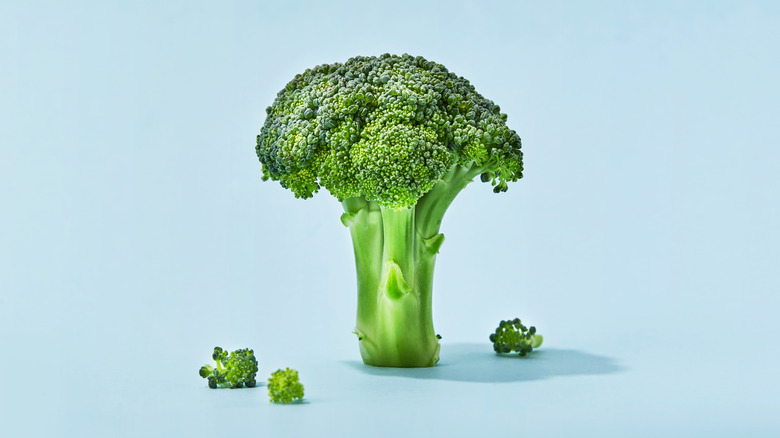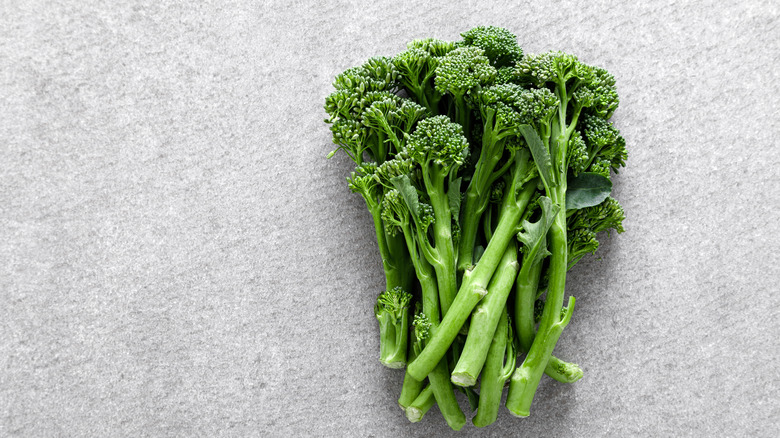The Flavor Difference Between Broccoli And Broccolini
Broccoli lovers will agree that there's never a bad way to prepare the vegetable. Enjoy it raw as a crunchy snack or perhaps grill, roast, or fry it as part of a knockout side dish. You can also toss it into salads, casseroles, or soups. With all sorts of unique cultivars, even broccoli super fans can get confused as to what differentiates each variety. Aside from aesthetics, a key difference between broccoli and its close relative, broccolini is flavor.
Known scientifically as brassica oleracea, Penn State explains that broccoli is native to the Mediterranean and has been enjoyed since the days of the Roman Empire, slowly becoming a popular vegetable across Europe and even across the pond in America. What's more, our love of broccoli has yet to waiver, especially given that the average consumer eats about five pounds of the green stuff, annually (via Statista). There are, however, still those that detest broccoli with a passion — but that just means more for the rest of us!
Broccolini is sweeter than broccoli
Think all those tree-like veggies are the same? Not a chance! Visually, broccoli has thick woody stems with large flowering heads of tightly clustered florets, whereas broccolini is defined by its leggy and leafy stalks that prop up smaller florets. The result of crossbreeding conventional broccoli with a Chinese broccoli varietal (via MasterClass), it's no wonder that broccolini has its own very vibrant taste.
Generally, the Food Network explains that broccoli has an earthiness that borders on bitter, unlike the mildly sweet taste of broccolini. Boasting a more mellow taste, broccolini also has delicate herbaceous notes similar to asparagus. Interestingly, because of their different compositions, broccoli's durability makes it a jack-of-all-trades in cuisine, whereas broccolini is best suited for cooking — roasting or grilling can especially draw out its natural sweetness.
That said, don't ever confuse broccolini with broccoli rabe! Also known as rapini or cime di rapa, these greens are starkly different. Related more closely to the turnip, Allrecipes reports that the slender-stemmed and ultra-leafy rapini has a bitterness reminiscent of mustard greens. Given its sharper flavor, it's wise not to use swap broccoli rabe in a recipe that requires broccoli or broccolini.

